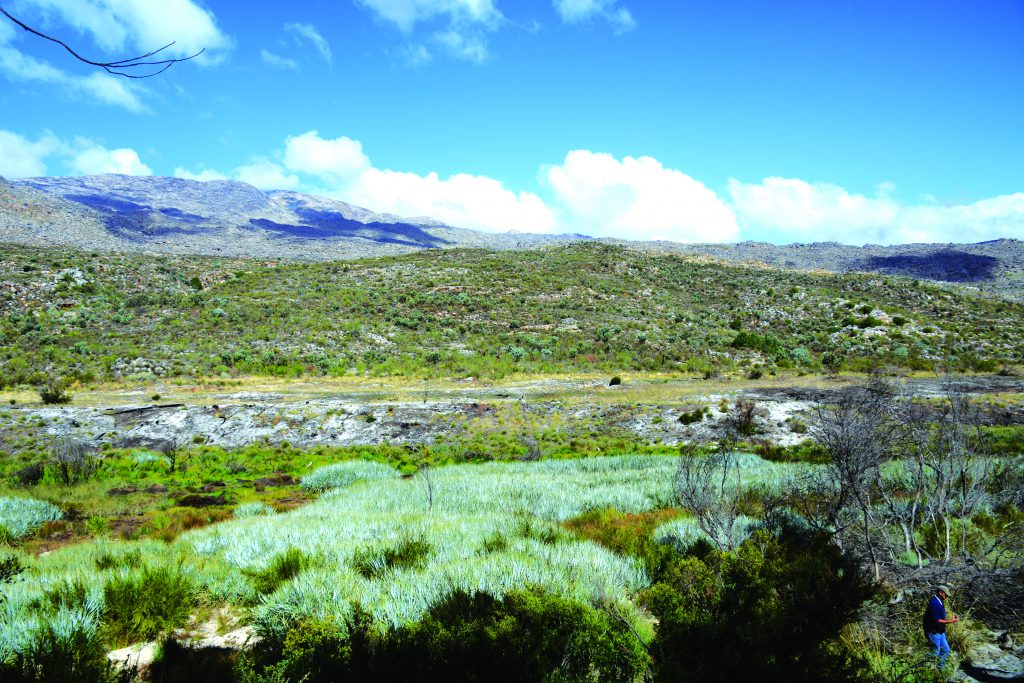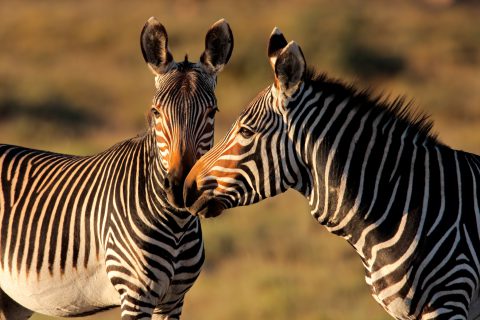Sunday Times Green
Let The Rivers Run
Peter Rooi crouches down on the bank of the False River on a farm near Ceres in the Western Cape and cups his hand together to scoop up the water. It’s a timeless act, but in this instance, Rooi’s claim to this clear trickle is personal.
A former seasonal fruit picker, Rooi now manages his own alien vegetation clearance team in the area – thanks to the help of farmer Steven Versveld who bought him his first chainsaw, and a project supported by Woolworths and WWF South Africa.
Where Rooi is crouching, 61 hectares of land next to the False River have been completely cleared and the results are evident. Not only is the water still flowing in the river in spite of a three-year drought, but this tributary feeds into the Titus River which in turn feeds the great Breede.
That’s partly thanks to the fact that upstream of where he is standing, a mass of spiky grey leaves of palmiet is flourishing. The indigenous palmiet plant has spongy roots that clean and release water during the dry season and help to control flooding in the winter.
Due to his work, Rooi can now also lay claim to another kind of flow – a healthier cash flow which has enabled him to put down his first deposit on a bakkie to expand his business. And he is proud to be a job provider among his fellow residents in the informal settlement of Bella Vista near Ceres.
The bigger picture
Zoom out, and Rooi is the manager of one of eight alien clearance teams working in the Upper Breede River catchment area in Ceres and Wolseley under the dynamic leadership of Ryno Pienaar. This project, which employs around 100 people, aims to clear the tributaries, marshes and riparian areas of alien vegetation to improve water flow and enhance biodiversity.
Pienaar is employed by the Wolseley Water User Association as the alien clearing project manager for the area and works in close co-operation with the Western Cape Department of Agriculture’s LandCare programme.
Woolworths funds Pienaar’s salary via WWF, while other contributors include local farmers, the Breede Gouritz Catchment Agency and the Western Cape treasury. Within months of the project’s inception, the co-ordinating government departments and landowners in the area began talking enthusiastically about the “Ryno” model, which exemplifies co-operation and partnerships. As a mark of its success, in the past year it has cleared 578ha and generated 11 627 days of employment in the area.
Similar projects are being replicated elsewhere too – in Riviersonderend and George. In the Outeniqua water source area, a partnership with SAB, Sanlam, the German Society for International Cooperation, the Department of Environmental Affairs and Nedbank has enabled the clearance of 880ha of alien vegetation over four years and created 22 000 days of employment.
As Pienaar explains, because seeds from alien vegetation float downstream, the more work you do upstream the better the results. So this work in the upper catchment of the Breede River benefits those who depend on the river all the way to Witsand at the sea.
And while the law requires landowners to keep their catchments clear of aliens, the best way to proceed is through co-operation, skills development and the kind of enthusiasm exemplified by the likes of Peter Rooi, for whom that handful of water symbolises a future that has changed for the better.
South Africa’s thirsty invaders
Water source areas make up only 8% of South Africa’s surface area but generate about 50% of the river flow. One can call them the “water factories” that provide us with the greatest benefits when they are kept in pristine condition.
But across South Africa, alien invasive plants, many of which originated in commercial forests and woodlots on farms, have taken over significant areas of land, choking out indigenous plants and using much more water than the natural vegetation.
It is estimated that these alien plants consume about 3.3-billion cubic meters of water a year. This is equivalent to nearly 4% of our river flow – a significant figure during times of drought – which makes it important to remove them from our water source areas.






 Sign-up and receive the Business Media MAGS newsletter OR SA Mining newsletter straight to your inbox.
Sign-up and receive the Business Media MAGS newsletter OR SA Mining newsletter straight to your inbox.